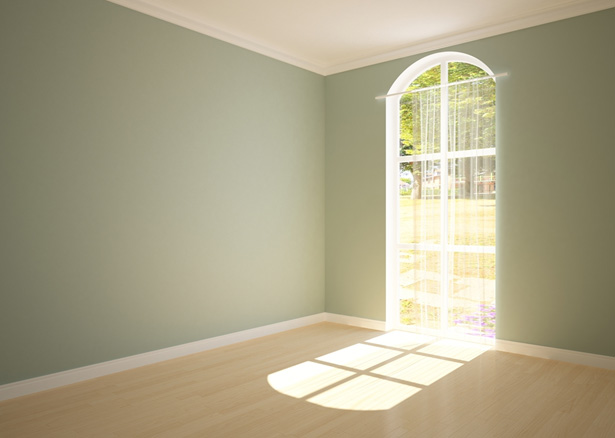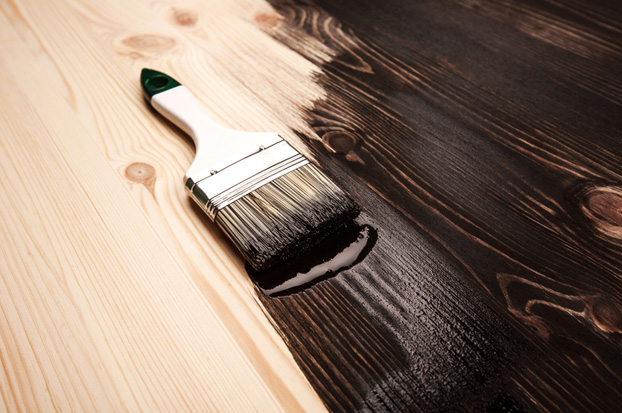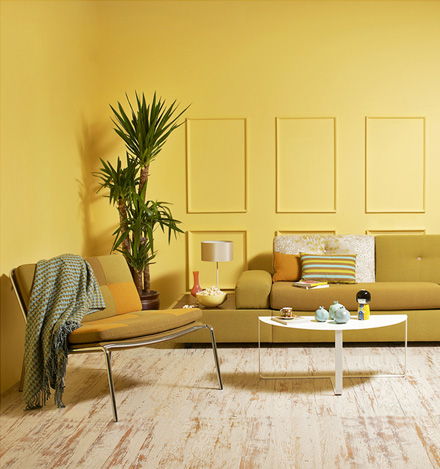Your cookies are in the oven, and the drinks are chilled. You’re excited to show off your new home after months of redecorating. In fact, you’re convinced your friends will be awed and realise you have the best looking apartment among them.
Then they come over and ask if the fading paint is avant-garde. You follow their laughter and see the paint you painstakingly applied on the walls months ago two shades lighter than you remember.
Yes, your paint has faded. And your reputation as the most beautiful apartment owner looks just as sad as your paint job right now. But not to worry, here are three pain-free ways to prevent it from happening again.
1. It’s in the colours you choose

Antoha713/Shutterstock.com
Sunlight and painted walls don’t go well together and often leads to the dreaded fade problem we want to avoid. Frequent sunlight causes photodegradation- chemical bonds in the paint are broken down by ultraviolet rays.
Not all colours react the same way. Dark colours absorb heat, and so suffer more moisture problems than lighter shades. Lighter colours last longer and fade less than dark colours. So to have your paint still in rosy hues when visitors come, you need to choose light colours for places with more sun, and dark colours for where the sun doesn’t shine.
That doesn’t mean that you have to turn your interiors into likes of a foreboding cave though. Instead, you can play with different hues for contrast to accentuate the prettier corners. For example, you could use Pink for the outer edges, and a darker shade of pink for the inner corners.
The room above has shades of dark pink in the middle and the edges, contrasted with lighter shades of pink on the outside, near the windows.
2. It’s about which surface you are painting on

Efetova Anna/Shutterstock.com
Some paints are only suitable for certain materials. Exterior and interior paints are suited for different parts of the house according to their qualities.
Wrong usage of paint leads to paint fade fast. For example, alkali-sensitive paints should not be used on highly alkaline surfaces, like masonry.
Acrylic and latex paints are highly durable, dry fast, and work for exterior surfaces. To figure this out, you can either look out for the symbols on the paint can or the paint catalogue, which shows you recommended shades for interior and exterior paint.
3. It’s in the paint that you choose

Daylightistanbul Studio/Shutterstock.com
High-quality paints hold their colour even when exposed to the elements. They adhere better to the surface, and are also more resistant to chalking – a process that robs an exterior paint of its colour. As the translated Chinese saying says: “The more you pay, the better the quality”; and this is true even for paint!
Besides fading, you’ll also want to look out for high-quality paint that doesn’t stink, doesn’t crack, dries fast, and is adaptable to our temperamental rain and sunshine weather.
Choosing high-quality paints mean you’ll get a beautiful house where you can entertain your guests all day and night, without worrying about fading paint or just sticking to dull shades of white. Just like the apartment above!
So there you have it! Three tips to keep in the mind the next time you want to paint your house in vibrant hues. No more plainol’ white!
5 Places You Probably Forgot to Factor in Paint For
